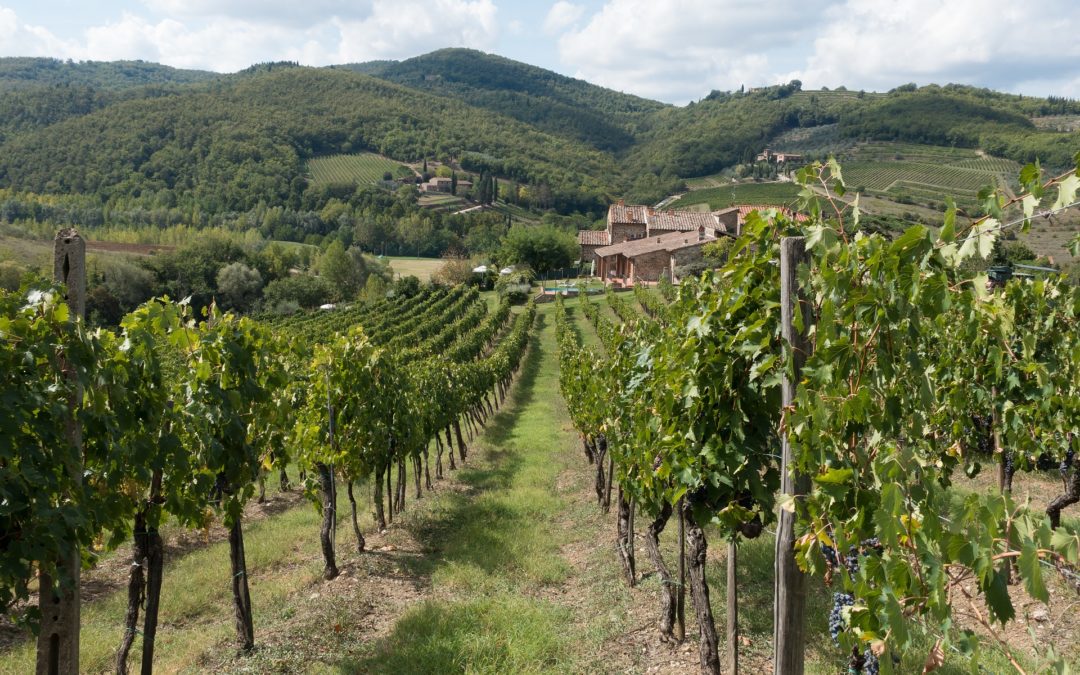Tuscany probably is the main Italian region for the wine production and sales. Not only on a national basis, but also from an international perspective.
Italy has always been in competition with France for the wine dominance all over the world, but Italy, and in particular Tuscany, still remains the first choice for some countries, as Germany, the United States and, in the latest years, China and Japan as well. But why is Tuscany such a great wine maker?
The very first reason for its huge popularity is the weather and then the favourable soil. Both are particularly suitable with the establishment of vineyards and their consequent welfare. The whole Tuscany is characterised with the presence of huge vineyards and its particular cultivation on the Tuscan hills, the terracing method. The vineyards nearby Florence and Siena represent an important tourist destination: people love to enjoy the typical red wines during dinner and lunch, or even walk through these vineyards discovering how the most popular Tuscan wines are created.
Visualizza questo post su Instagram
If you visit Tuscany, you must drink a glass of these red wines
For wine lovers, there is plenty of choices in Tuscany: the many red wines are different from each other because of the several Tuscan types of soil. Let’s try to list the most beloved ones in Italy and abroad. Surely, the first one that comes to mind to everyone is Chianti Classico. With its bright colour and strong flavour, it makes a great match with an intense dish, as red meat, venison, roast, truffle and cheese. But it generally makes a perfect combination with most of Tuscan dishes and with the international and ethnic cuisine, too. It is produced nearby Florence and Siena, in the Chianti area, as well as three other fine wines: Vino Nobile di Montepulciano, Brunello di Montalcino and Tignanello. The Montepulciano has a woody taste because it has to stay in a wooden barrel for two years before it is bottled up. If you want to enjoy this red wine to the fullest, you should eat red meat with it, venison and the “bistecca alla fiorentina” (Florentine steak) – one of the wonders in Florence. The Brunello di Montalcino has a strong and deep taste, whereas the Tignanello is more balanced and fruity. The Brunello is the typical wine that improves with time and if you combine it with a dish of red meat, mushrooms, truffle, venison or cheese it will taste even more. Instead, the best match for the Tignanello is represented by main courses, grilled meats, salami and cheese.
Visualizza questo post su Instagram
Tuscany can offer much more! The broad range of wines includes red, white and sweet wine
The rest of Tuscany also offer a huge variety of wines. If we take a look around Livorno and Grosseto, we can find the Bolgheri Sassicaia. This strong wine can be combined with venison dishes. Even better if they are seasoned with typical herbs and spices from this area. Let’s move towards the Maremma. Here two popular wines are produced: Montecucco and Morellino di Scansano. The perfect match for the Montecucco follows the regional traditions, such as soups and pasta with meat sauces. While the Morellino di Scansano can generally be tasted with red meats and cheese, as the previous wines. As white wine we can mention the Vermentino, a grape with an ancient story, probably created in Spain or Portugal. Nowadays it grows in Tuscany as well as in Sardinia and it is great paired with fish and shellfish.
The last noteworthy wines, that are in vogue all over the world are from the area of Prato and San Gimignano (near Siena). The first one is the Vin Santo: it is a sweet wine and it can be really appreciated with any kind of desserts. The latter is the Vernaccia di San Gimignano, a still white wine. The ideal is drinking it as an aperitif or with fish dishes, in particular molluscs and crustaceans.
Visualizza questo post su Instagram

